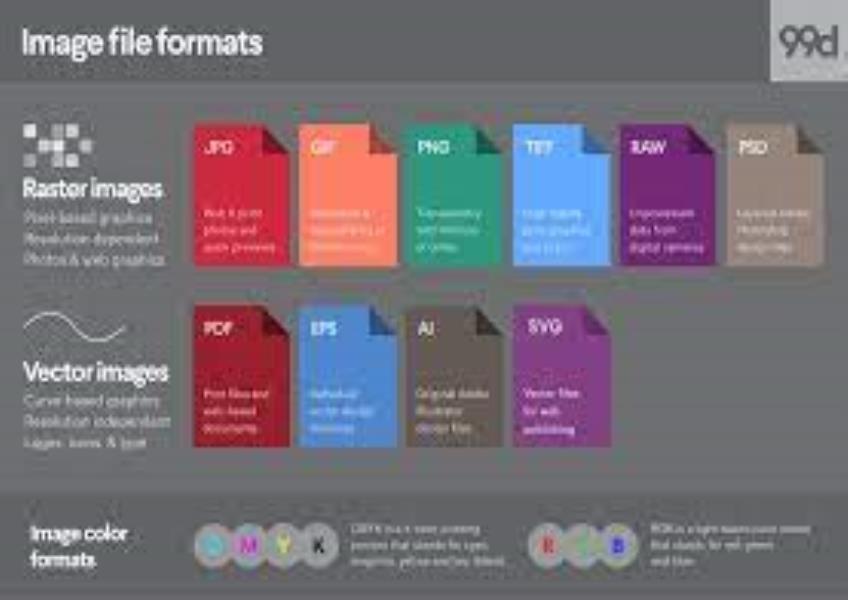Get the latest updates From BL Soni College Bhilwara

What are some common file formats used in graphic design?
Graphic designers use various file formats for different purposes in their work. The choice of file format depends on factors such as the type of graphic, intended use, and whether the graphic needs to support transparency, resolution, or scalability. Here are some common file formats used in graphic design: Raster Image Formats: JPEG (Joint Photographic Experts Group): Ideal for photographs and images with continuous tones. It supports compression, which can reduce file size but may result in some loss of quality. PNG (Portable Network Graphics): Suitable for images with transparency and web graphics. It uses lossless compression, so it retains image quality. GIF (Graphics Interchange Format): Often used for simple animations and images with limited colors. It supports transparency and animation. TIFF (Tagged Image File Format): Preferred for high-quality, print-ready images because it doesn't use compression and maintains image integrity. BMP (Bitmap): A Windows-native format that stores images pixel by pixel without compression. It's used less frequently due to large file sizes. Vector Image Formats: SVG (Scalable Vector Graphics): A widely used vector format for web graphics, icons, and logos. It's resolution-independent and can be scaled without loss of quality. AI (Adobe Illustrator): The native file format of Adobe Illustrator, a popular vector graphics software. It preserves all design elements and is editable. EPS (Encapsulated PostScript): A versatile vector format that can contain both vector and raster elements. It's often used in print and design applications. PDF (Portable Document Format): Supports both vector and raster graphics and is widely used for documents, presentations, and printing. PDFs can be interactive and contain links and forms. Layout and Design Formats: INDD (Adobe InDesign): The native file format of Adobe InDesign, a desktop publishing software used for layout design, such as magazines, brochures, and books. PSD (Adobe Photoshop): The native format of Adobe Photoshop, a raster image editing software. It stores layers and other editing features for images. CDR (CorelDRAW): The native format of CorelDRAW, a vector graphics software similar to Adobe Illustrator. It's used for illustrations, layouts, and designs. IDML (Adobe InDesign Markup Language): An interchange format for Adobe InDesign that allows for compatibility with older versions and other design software. 3D Graphics Formats: OBJ (Wavefront Object): A common 3D model file format used for 3D graphics and animation. STL (Stereolithography): Primarily used in 3D printing, this format describes 3D surface geometry. CAD (Computer-Aided Design) Formats: DWG (AutoCAD Drawing): A proprietary format used for 2D and 3D CAD drawings, mainly in the architecture and engineering industries. DXF (Drawing Exchange Format): A common CAD format for exchanging 2D and 3D drawings between different software programs. Raw Image Formats: RAW: These formats store unprocessed data directly from a digital camera's sensor. They provide maximum flexibility for post-processing but require specialized software for editing. Font Formats: TTF (TrueType Font) and OTF (OpenType Font): Common font formats used for typography in graphic design. They include both character data and design information. These are some of the most common file formats used in graphic design, each serving specific purposes and requirements. Designers often need to consider compatibility, image quality, and editing capabilities when choosing the appropriate format for a project.


